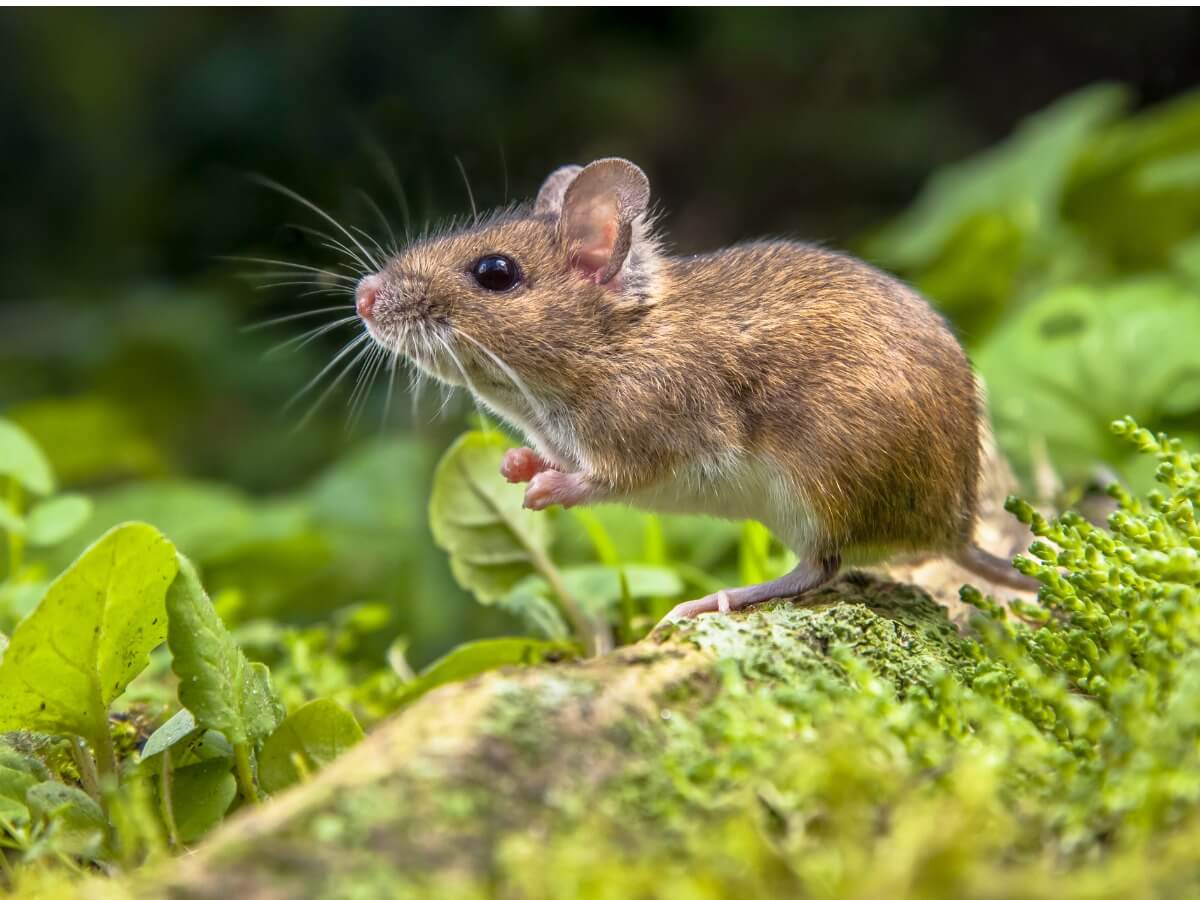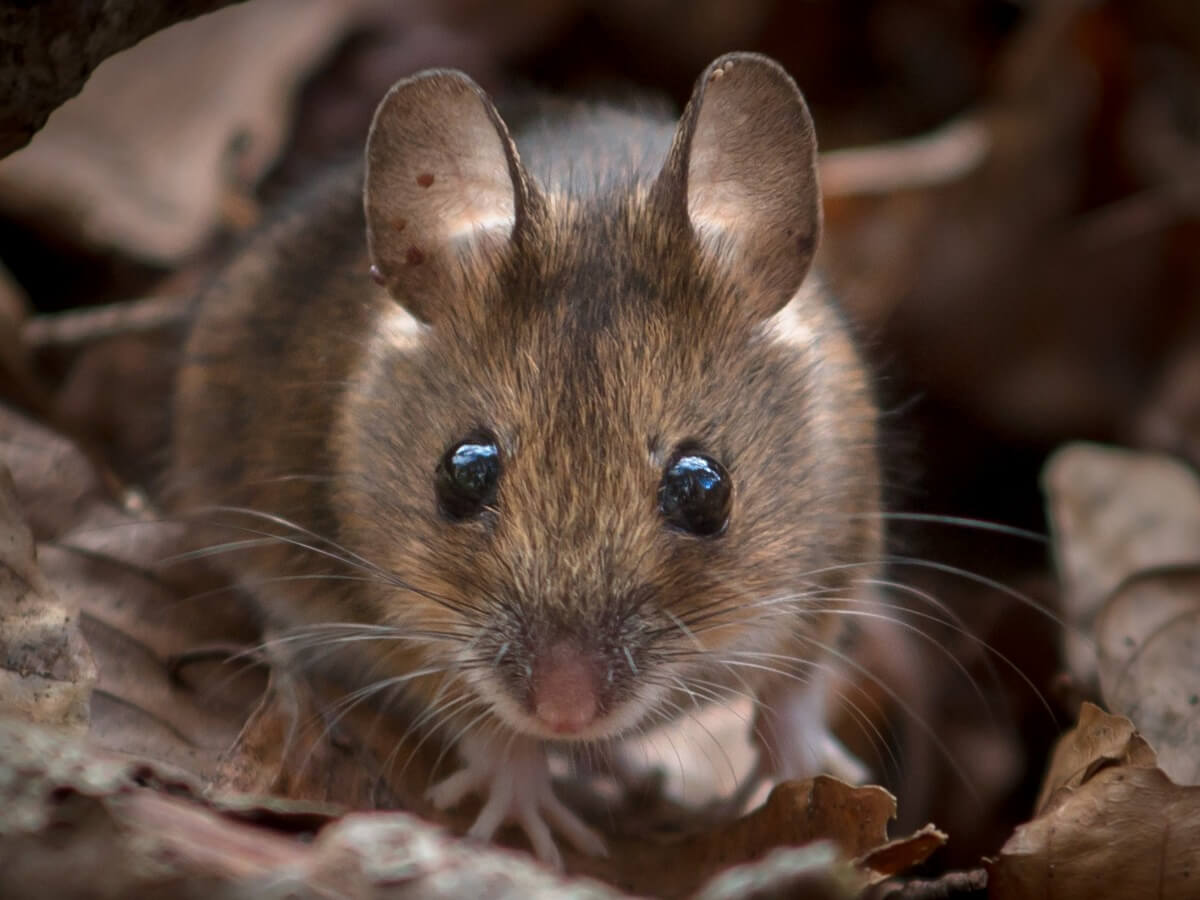10 Curiosities About Mice

Rodents are fascinating animals, but, unfortunately, some humans judge them for their “annoying” characteristics. These small mammals seek to survive at all costs and, strangely enough, sometimes as a species we even feel threatened by their intelligence and ability to solve problems. Do you want to get to know some fascinating curiosities about mice?
Although these animals have a reputation for being dirty and a bit of a pest, mice hide countless amazing secrets inside their small bodies. They’re intelligent, empathetic, capable of surviving very adverse situations, and as social as we are. If you’d like to find out more interesting facts about them, you’re in the right place.
1. Mice are rodents…and there are many species
The term “mouse” doesn’t designate a single species, but rather a group of rodents that have a common size. There are several families and genera included under this term, but, without a doubt, the most representative of all is the genus Mus. This taxon contains about 38 different species, among which is the house mouse (Mus musculus).
Rodents are the largest group of mammals in the world, accounting for 40% of the variability of the Mammalia class. It’s estimated that there are about 1,500 species of rodents in total, and there are still many more to discover. After them, the most diverse group within mammals is that of bats (Chiroptera).
There are many species of mice, but the most representative are of the genus Mus.
2. They’re rodents for one specific reason
The Rodentia order doesn’t have that name by chance. If one thing distinguishes rodents (and therefore mice) from other mammals, it’s their ability to gnaw, manifested by the presence of huge upper and lower incisor teeth compared to the rest of their skull. These have a large amount of enamel on their front face and grow steadily throughout the animal’s life.
As the incisors of mice grow without stopping, they have to gnaw the materials around them whenever they can (especially during feeding). If not, these teeth would end up piercing their skull and killing them.

3. A common body shape
Another of the curiosities about mice lies in their physical morphology. Although there are many species included in this term, almost all of them have certain features in common: a small size (6 to 10 centimeters, 2 to 4 inches), very striking ears, a long and bare tail, a pointed snout, and very nice whiskers that act as sensory receptors.
All mice are small and their tails are roughly the same length as their entire body.
4. Rats and mice aren’t the same!
The terms rat and mouse are different at a conceptual and taxonomic level. Rats are generally much larger than mice, but, in addition to this, they have genetic information that’s different enough to classify them into different genera. Rats belong to the genus Rattus, while most mice are included in the genus Mus and Apodemus.
Although they belong to different genera, rats and mice are part of the same family (Muridae)
5. The base of the food chain
As adorable as they are, we need to talk about mice as prey. These rodents reproduce very quickly, as exemplified in the following facts:
- When a female becomes pregnant, it only takes about 20 days to give birth. In the 24 hours after giving birth it’s already receptive to reproduce again.
- Each litter is made up of 5 or 6 babies, although there can even be up to 12.
- An adult female can give birth to 5-10 litters per year.
If we apply simple math, it’s easy to deduce that a female can give birth to 50 mice or more in a 12-month interval. This reproductive speed is known as the R strategy. A single specimen usually gives birth to hundreds of offspring throughout its life, but the probability of individual survival is very low and the average life expectancy is greatly reduced.
Due to their abundance, mice are the basis of the diet of many mammals, birds, reptiles and even invertebrates.
6. House mice are the result of genetic selection
Another of our curiosities about mice is that they differ greatly in their characteristics depending on their condition. Domestic specimens of the Mus musculus species are larger and plumper than wild ones, as they can reach up to 8 centimeters (just over 3 inches) in body length and weigh up to 130 grams (6 oz).
Additionally, domestic mice come in many colors and varieties (black, chocolate, blueish, cream, lilac, reddish, and more), while wild mice only feature shades from black to brown. This variability is achieved through genetic selection, that is, by reproducing the most beautiful specimens for several generations in a row.
7. They are expressive and feeling animals
Various studies have shown that mice are capable of feeling complex emotions. For example, it has been detected that specimens that eat sugary foods show a facial structure of joy that their companions satiated with other foods don’t show. In other words, it’s not just about instinct: they have tastes and they’re capable of showing it.
When they process stimuli, these rodents are capable of showing their own emotions that go beyond their natural condition. If a mouse sneaks into your house, you should think twice before trying to kill it.
8. Mice have empathy
Other research has shown that when they perceive that a companion is injured, mice go to them and tend to interact more with hurt individuals than with healthy ones. This seems to indicate that they’re capable of recognizing the pain of others, empathizing with it, and providing care to the most vulnerable in the group.
It’s necessary to continue studying this type of behavior, but without a doubt everything seems to indicate that mice are capable of empathizing with their companions.
9. Mice have no predilection for cheese
One of the most surprising of curiosities about mice, right? Although these animals are always associated with the consumption of cheese in drawings and movies, in reality, they don’t have any predilection for this food. They’ll eat it if they have nothing else in front of them, but it certainly isn’t their first choice and they aren’t actively looking for it. If you’d like to know more about their opinion about cheese please take a look at the article at the end of this post!
In nature, mice adopt a mostly herbivorous type of diet, eating all kinds of fruit or seed of plant origin. However, in urban environments, they don’t usually reject anything and they get used to feeding on human garbage that’s still in good condition. They’re very adaptable, and for that reason, they’ve colonized nearly every type of ecosystem.

10. Wonderful animals that must be respected
In the last of our curiosities about mice, we want to emphasize that these rodents are deserving of respect and have the right to life. As you can see, they’re intelligent, empathetic, prolific, and very beautiful. They don’t usually invade our areas, but they do take advantage of human abundance to proliferate in cities.
In addition to all its positive characteristics, we mustn’t forget that hundreds of thousands of mice are used in laboratories to find the cure for human diseases. These small rodents are sacrificed for our well-being and the least we can do to return the favor is to respect the wild specimens.
All cited sources were thoroughly reviewed by our team to ensure their quality, reliability, currency, and validity. The bibliography of this article was considered reliable and of academic or scientific accuracy.
- Ueno, H., Suemitsu, S., Murakami, S., Kitamura, N., Wani, K., Okamoto, M., … & Ishihara, T. (2018). Empathic behavior according to the state of others in mice. Brain and behavior, 8(7), e00986.
- The facial expressions of mice, MAX-PLANK. Recogido a 14 de septiembre en https://www.mpg.de/14636373/0330-psy-056402-the-facial-expressions-of-mice
- Mus musculus, Animal Diversity Web (ADW). Recogido a 14 de septiembre en https://animaldiversity.org/accounts/Mus_musculus/
This text is provided for informational purposes only and does not replace consultation with a professional. If in doubt, consult your specialist.